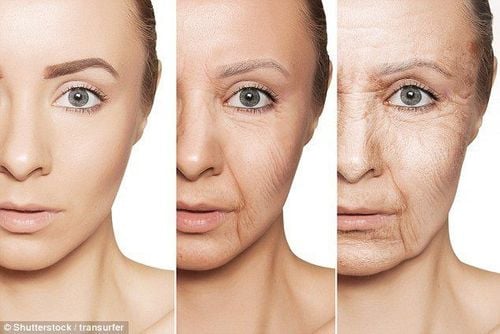This is an automatically translated article.
Zokinvy is the first and only tablet indicated for the treatment of Hutchinson-Gilford Progeria Syndrome and certain diseases caused by mutations in lamin A protein or lamin protein adhesion proteins. The article will provide information about the uses, doses and notes when using Zokinvy.
1. What does Zokinvy do?
Zokinvy, with the active ingredient Lonafarnib, is the first tablet approved for use in adults and children 12 months of age with certain rare genetic conditions that cause premature aging. It is used to reduce the risk of death in patients with Hutchinson-Gilford Progeria Syndrome (HGPS).Hutchinson-Gilford Progeria syndrome, also known as progeria, is a rare and potentially fatal condition in early childhood characterized by premature aging. Life expectancy of HGPS patients treated with Zokinvy increased by an average of 3 months during the first 3 years and an average of 2.5 years over 11 years compared with untreated patients. Besides, Zokinvy is also used to treat certain diseases caused by mutations in lamin A protein or lamin protein adhesion proteins.
2. Dosage and usage of Zokinvy
How to use:
Patients need to use Zokinvy exactly as directed on the label and prescribed by the doctor. Zokinvy is usually taken daily at breakfast and dinner. Patients should take the drug with a full glass of water, swallow the capsule whole and do not crush, chew, break or open the capsule. If the capsule cannot be swallowed whole, the patient may open the capsule and sprinkle the powder in 1 to 2 teaspoons of orange juice, swallowing the mixture within 10 minutes of mixing. Do not mix the ingredients of Zokinvy capsules with grapefruit juice. Dosage:
Zokinvy dose is based on body surface area (calculated by height and weight). Dosage requirements may change if you gain/lose weight or are still growing. Zokinvy dosage information is as follows:
Usual adult dose for the treatment of Hutchinson-Gilford syndrome:
Initial dose is 115mg/m2 of skin, taken twice a day; after 4 months increase to 150mg/m2 of skin, orally twice a day. Maintenance dose is 115mg/m2 or 150mg/m2 x 2 times/day. Usual dose for the treatment of Hutchinson-Gilford syndrome in children 12 months of age and older with a body surface area (BSA) of 0.39m2 or more:
Initial dose: 115mg/m2 orally 2 times a day; after 4 months increase to 150mg/m2 orally twice a day. Maintenance dose: 115mg/m2 or 150mg/m2 x 2 times/day. Note: The total daily dose should be rounded to 25mg. For patients who cannot tolerate a dose of 150 mg/m2 twice daily due to repeated vomiting and/or diarrhea leading to dehydration or weight loss, the dose may be reduced to 115 mg/m2.
3. Side effects of the drug Zokinvy
Patients using Zokinvy may experience the following side effects:
Electrolyte imbalance, such as low potassium, sodium or calcium in the blood; Infection, fever, cough, nosebleeds ; Hypertension ; Skin rash; Stomach pain, nausea, vomiting, diarrhea; Decreased appetite, weight loss; Headache; Feeling tired; Muscle or joint pain; Cold symptoms such as stuffy nose, sneezing, sore throat Patients should contact their doctor immediately if they experience the following symptoms:
Vision problems such as reduced night vision; Severe persistent nausea, vomiting, diarrhea; Anorexia causes weight loss; severe headache, blurred vision, trouble breathing, nosebleeds, pounding in the neck or ears; kidney problems such as urinating little or no, swollen feet/ankles, feeling tired and short of breath; Increased potassium causes nausea, weakness, tingling sensation, chest pain, irregular heartbeat, loss of mobility Low potassium with signs such as leg cramps, constipation, irregular heartbeat, increased sensitivity thirst or urination, numbness, tingling, muscle weakness, or flaccid feeling; Low sodium causes headache, confusion, slurred speech, severe weakness, vomiting, loss of coordination, feeling unsteady; Low calcium causes muscle spasms, numbness or tingling sensations around the mouth, fingers, and toes; Signs of infection including fever, chills, cough, rash, swelling, diarrhea, pain or burning when urinating
4. What are the precautions when using Zokinvy?
The safety and effectiveness of Zokinvy in children under 12 months of age have not been established. Therefore do not use Zokinvy for this object. Patients need to have their vision checked on a regular basis while using Zokinvy. Patients may need to stop using Zokinvy 10 to 14 days before and 2 days after using certain other medicines. Do not stop taking Zokinvy without consulting your doctor. Do not use Zokinvy if the patient is taking drugs that are strong or moderate CYP3A inhibitors or inducers such as Midazolam, Lvastatin, Simvastatin and Atorvastatin. Zokinvy can cause a serious increase in blood pressure during use. Patients should contact their doctor immediately if they develop symptoms of high blood pressure, including headache, shortness of breath, nosebleeds, flushing, fatigue, dizziness, vision problems, heart rhythm problems unevenness or chest pain. Before taking Zokinvy, patients should inform their doctor of all medical conditions, especially eye or kidney problems. Zokinvy may affect fertility (ability to have children) in both men and women. Zokinvy may cause nephrotoxicity. Therefore, the manufacturer recommends regular monitoring of renal function when using Zokinvy. Missed dose: If a dose of Zokinvy is missed, patients should take it as soon as they remember and within 8 hours before the next dose. If it is less than 8 hours until the next dose, the patient should skip the missed dose and take the next dose at the usual schedule. Pregnancy: Lonafarnib can harm an unborn baby. Therefore, the patient should use effective contraception while taking the drug. Lactation: It is not known whether Zokinvy is excreted in human milk. However, the drug may not be safe for nursing infants, so patients should consult a specialist before using Zokinvy. Store Zokinvy at room temperature, away from moisture and heat.
5. Drug interactions to watch out for
Drug interactions can change the way treatment works or increase the risk of serious side effects. Patients should inform healthcare professionals of all medications they are taking, including prescription and nonprescription drugs, vitamins or supplements. Patients should also consult their doctor before taking any new medication.
Here are some drug interactions to watch out for when using Zokinvy:
Some drugs that should not be used with Zokinvy include: Midazolam, Phenobarbital, Phenytoin, the antifungal Azol, some antiviral drugs , Atorvastatin, Lovastatin, Simvastatin, antibiotics Erythromycin, Clarithromycin,... Zokinvy has the ability to strongly inhibit CYP3A4 enzyme and increase serum concentration of Colchicine. Colchicine is contraindicated in patients with impaired liver/renal function and who are taking strong CYP3A4 inhibitors. In subjects with normal liver and kidney function, the dose of Colchicine should be reduced. Zokinvy can increase the concentration of Cortisol, Domperidone, Eplerenone, Everolimus,... Therefore, caution should be exercised when using Zokinvy with the above drugs. Zokinvy may increase the serum concentration of Budesonide. Alternative options should be considered. If co-administration is required, the risk of adverse effects of corticosteroids should be monitored. Above is the general information about Zokinvy drug. If you have questions or need more information about your medication, you should contact your doctor or pharmacist.
Please dial HOTLINE for more information or register for an appointment HERE. Download MyVinmec app to make appointments faster and to manage your bookings easily.













